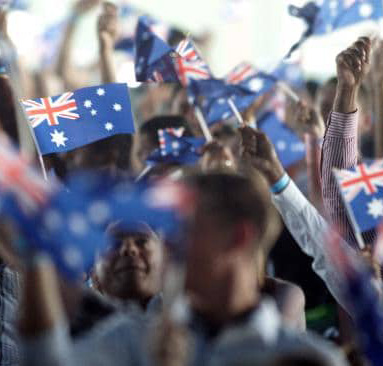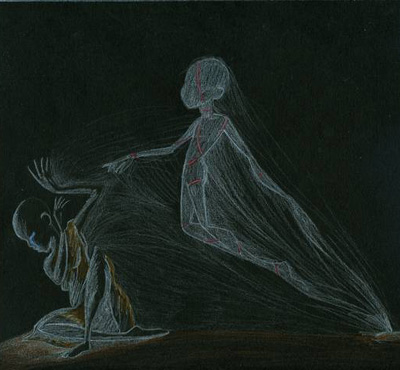Like many people, I eagerly read Michelle Obama’s memoir “Becoming” as soon as it was published this week. It’s important that this book has come out now and there’s many reasons to be excited about it. I’m not only excited about it because she’s a former first lady as well as being an icon in her own right or her historic importance as the first African American First Lady who is the great great granddaughter of a slave. And not just because this book finally gives insight to her own private thoughts on things ranging from her evolving romance with Barack or the painful transition to the current presidency after they left the White House. And I’m not even excited just because I have silly fantasies about what it’d be like to be Michelle’s best friend and closest confidant and listening to the 19 hours and 3 minutes of the audio book meant Michelle was speaking about her private reflections directly into my ear. I’m excited about this book because I need a dose of wisdom and optimism in a period of time when the world seems so bleak and I feel so uncertain and frightened about my own future and the future of our society that I sometimes feel a creeping cynicism overcome me.
Having just read the book I’m filled with emotion and admiration and, yes, more hope because of the striking insights and heartfelt openness of Michelle’s story. This is someone who has been put under such brutal public scrutiny because of who she is and her position but I love how she emphasizes the importance of telling our own stories. She describes how through this book she is “slaying the caricatures and stereotypes with my own words.” So she tells the story of her life from childhood up until moving into a new home after leaving the White House. And through this she reveals her qualities as well as her flaws, her triumphs and disappointments, her difficult compromises and forthrightness (of being a girl who bravely talked back to her cantankerous grandfather – while realising in retrospect that he was grappling with his own disappointments in life.) She also reveals how throughout her life she’s continuously asked herself the worrying question “Am I good enough?” In being so candid she restores the humanity of her being which endless media and tabloid scrutiny have taken from her.
I think this is really important because I was just at a book prize ceremony the other night and as a nonfiction award was being given out the presenter announced how he hoped the broadening interests being covered in nonfiction published today would hail the death of the celebrity memoir. And, of course, I think a diversity of nonfiction is great and there are plenty of sensationalist celebrity memoirs which probably aren’t worth our time, but the huge response to Michelle’s book being published is a sign that we’re desperate for an intelligent role model we can look up to whose had a significant political and cultural influence in world history.
Here is a favourite quote which gives a glimpse about why I find this book so inspirational: “So many of us go through life with our stories hidden feeling ashamed or afraid when our whole truth doesn’t live up to some established ideal. We grow up with messages that tell us that there is only one way to be American. That if our skin is dark or our hips are wide, if we don’t experience love in a particular way, if we speak another language or come from another country then we don’t belong. That is until someone dares to start telling that story differently.” So this book does give us a different story and one many of us are desperate to hear.
I found it so fascinating reading about how she grew up in Chicago and how her neighbourhood slowly emptied of white and affluent families when it was labelled a “ghetto”. When her academic achievements landed her in a well-regarded school she gradually learned that there exists an African American elite and a ‘Jack and Jill’ club. And I found this particularly fascinating having read Margo Jefferson’s memoir Negroland a couple years ago which goes into this subject in a lot more detail and coincidentally covers a lot of the same time period living in Chicago in the 50s and 60s. An insight Michelle takes from this period of her life is learning about the “apparatus of privilege and connections. What seemed like a network of half hidden ladders and guide ropes that lead into the sky.” She gains a deeper understanding of the world and its secret privileges which exist from the smallest community all the way up through the mechanism of government.
We discover about how she learned to play the piano from a young age, about her father’s growing disability (multiple sclerosis), of going to the drive-in to watch Planet of the Apes movies, being good friends with Rev Jesse Jackson’s daughter in high school which was her initial early brush with politics, the pain of breaking with her first important boyfriend on leaving to study at Princeton. And there’s little personal insights like how she loves the “tidy triumph delivered by a home makeover show”, the panic of re-election night when her phone service goes out and she assumes it’s bad news when no one responds to her text messages, sneaking out of the White House with one of her daughters to see it illuminated by rainbow lights after same-sex marriage becomes a right after a Supreme Court ruling. There are encounters with famous world figures like chatting about uncomfortable shoes with Queen Elizabeth and having a private conversation with Nelson Mandela. She confides how she’s not someone naturally drawn to politics and she found a supreme simple comfort in making cheese toast in their new home after moving out of the White House.
Of course, there’s also all the wonderful insight into meeting Barack and their relationship. How she wasn’t impressed by him on their very first (professional) meeting because he was late. She was assigned to be his mentor at the law firm she worked for (even though he’s 3 years older than her) and how she told him off for smoking cigarettes on that first meeting. How Barack spent any spare change he had on books and reads political philosophy for pleasure. And there’s all the romance of how they left halfway through a production of Les Mis because neither were enjoying it, how she calls him a unicorn and fact man (since he has an almost photographic memory), the sexual tension when she allows the thought of a romance with him and their first kiss over ice cream. She notes how she gets him to watch Sex & the City. And there are also insights into how their different types of personalities complement each other: where she’s fastidious and fast moving, he’s laid back and patient. About how they had differing views on marriage and how she found living with someone with a strong sense of purpose was something she had to get used to. It’s really powerful how she writes candidly about having a miscarriage and receiving IVF treatments. The real difficulty of balancing a work and home life as a mother which leaves her feeling like she’s only doing things half well. Many female friends of mine have described being in similar positions as young mothers.
So the book is filled with these specific but very relatable details. And it’s great because it reveals how she’s a much more dynamic individual than most people give her credit for. For instance, one of her big platforms as first lady was to dissuade obesity in children by encouraging nutrition and she establishes a garden at the White House, but she also reveals how she occasionally enjoys a Chipotle meal or McDonald’s cheeseburger. Of course she does! So many people do but rather than see this as a contradiction it shows that she’s just human but really cares about trying to be more healthy and conscientious about what she eats as well as inspiring real change in school lunches across America and lowering the sugar content in mainstream foods. And she explores how many of her initiatives grew out of a really personal place for her from establishing mentoring programs for girls and young women to speaking out for stronger gun control laws and introducing a poetry and spoken word event at the White House – at which Lin-Manuel Miranda performed workings from what would become his show Hamilton.


































